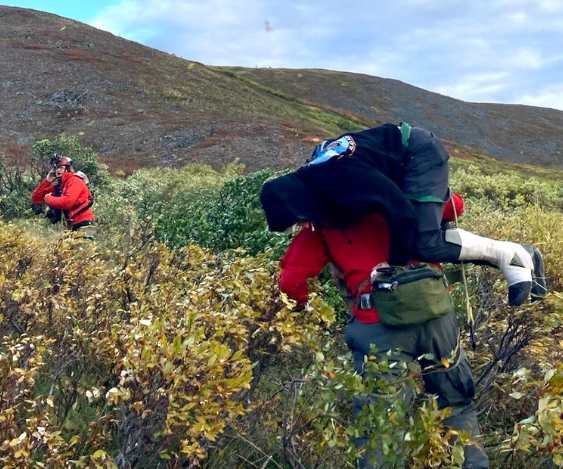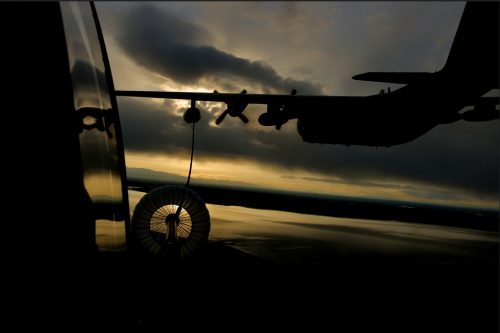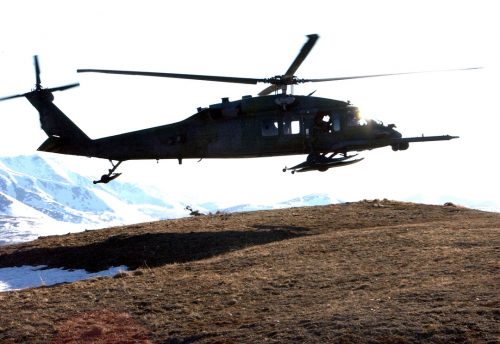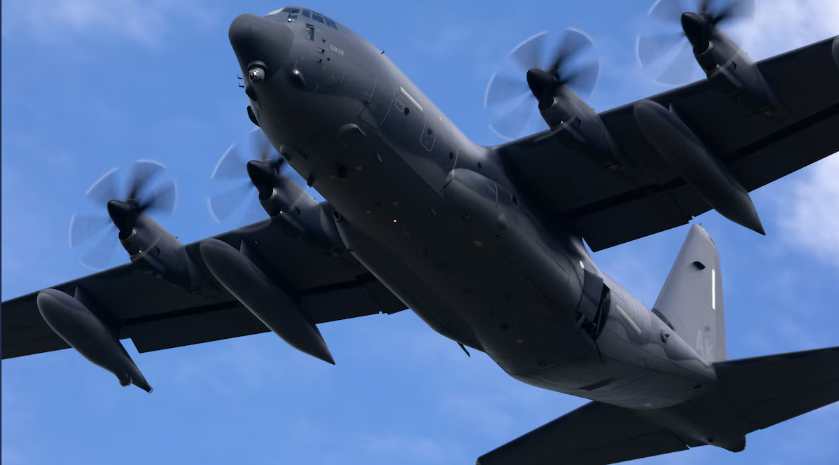
JOINT BASE ELMENDORF-RICHARDSON, Alaska — Airmen with the Alaska Air National Guard’s 210th, 211th and 212th Rescue Squadrons rescued two men after their aircraft crashed in a remote region of the northeast Brooks Range Friday.
The Alaska Rescue Coordination Center reports that the pilot of the aircraft had picked up a group of hunters from the Coleen River when it went down. The plane was equipped with a 406 MHz emergency location transmitter, which provided the coordinates of its location via satellite to the Alaska Rescue Coordination Center, according to Staff Sgt. Katie Langerman, a controller there.
“The owner’s information is provided by the advanced 406 MHz ELT system, which enabled the RCC to contact the pilot’s wife,” Langerman said. “She verified the aircraft was airborne and provided additional information about the members of the hunting party.”
The Alaska Air National Guard accepted the mission to search for the aircraft in possible distress at approximately 8:30 a.m. and launched an HC-130 King aircraft from the 211th Rescue Squadron out of Joint Base Elmendorf-Richardson and an HH-60 Pave Hawk helicopter from the 210th Rescue Squadron, Detachment 1, out of Eielson Air Force Base.
Each rescue aircraft also had a team of Guardian Angels from the 212th Rescue Squadron on board. Guardian Angel teams are highly trained medical personnel made up of a pararescuemen and combat rescue officers who specialize in conducting high-risk rescue missions.
The HC-130 was dispatched from JBER to provide air refueling and communications capabilities because of the distance the aircraft had to travel to reach the crash site, according to Langerman. The location of the crash was approximately 560 nautical miles from JBER and approximately 300 nautical miles from Eielson AFB.
Once at the location, the HH-60 landed at the site and loaded two of the crash survivors into the helicopter, according to Langerman. Two other men from the hunting party declined transport and remained at the scene to await other travel arrangements.
The two men who boarded the HH-60 were flown to Fairbanks Memorial Hospital and were released to medical personnel there at approximately 2 p.m. and subsequently refused medical treatment, Langerman said.
“The pilot was very well prepared and educated on Alaska flying,” Langerman said.
Aside from having the 406 MHz ELT installed into the aircraft, the pilot also carried a SPOT beacon and a satellite phone, Langerman explained.
“Because of these devices, he was able to ease the stress level of his family by letting them know he was alive and well and coordinated rescue efforts with the RCC,” she said.








